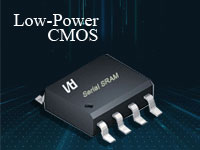NAND Market Expected to Regain Balance in 2018
The NAND flash market is expected to move into better equilibrium in 2018 as the production of NAND ramps up to meet demand, according to DRAMeXchange.
SAN FRANCISCO — The NAND flash market is expected to move into better equilibrium in 2018 as the production of NAND ramps up to meet demand, according to DRAMeXchange, a market research firm that tracks memory chip price.
Demand has exceeded supply in NAND for sixth consecutive quarters since the third quarter of 2016. According to DRAMeXchange, demand for NAND has continued to increase through 2017 due to a strong server market and the increasing memory content in smartphones. Meanwhile, supply has been constrained by NAND flash markers technology migrations, principally to 3D NAND.
However, DRAMeXchange predicts that NAND flash bit growth will be about 43 percent in 2018, while bit demand growth is projected to be about 38 percent.
According to Alan Chen, senior research manager at DRAMeXchange, NAND suppliers other than market leader Samsung Electronics have experienced losses of production capacity as they moved to improve their 3D NAND production processes. "At the same time, suppliers have been unable to effectively utilize the additional capacity that they have taken on," Chen said, in a press statement.
But Chen expects suppliers to reach maturity on their respective 64- and 72-layer NAND stacking technologies next year. Chen expects the market to briefly shift into oversupply in the first quarter of 2018 as production of consumer electronics goods such as smartphones and PCs drop sharply from fourth quarter holiday season levels.
DRAMeXchange expects 3D NAND to make up 70 percent of global NAND bit output next year, the firm said.
Samsung has been in mass production of 64-layer 3D NAND since the recently concluded third quarter. By the fourth quarter, DRAMeXchange expects 3D NAND to be more than 50 percent of the company's NAND capacity, a number that could rise to as high as 60 to 70 percent next year.
SK Hynix now uses mainly 48-layer NAND stacking technology, but its 72-layer stacking will account for a larger share of its production capacity next year, according to DRAMeXchange. The firm expects about 20 to 30 percent of SK Hynix's total NAND flash production capacity to be 3D NAND in the fourth quarter of this year, a figure that could rise to 40 to 50 percent by the fourth quarter of 2018, DRAMeXchange said.
Toshiba and partner Western Digital mainly produced 48-layer 3D NAND during the first half of this year. About 30 percent of the joint venture's total NAND capacity will be based on 3D NAND in the fourth quarter, with that number expected to surpass 50 percent by the fourth quarter of 2018, according to DRAMeXchange.
CONTACT US
USA
Vilsion Technology Inc.
36S 18th AVE Suite A,Brington,Colorado 80601,
United States
E-mail:sales@vilsion.com
Europe
Memeler Strasse 30 Haan,D 42781Germany
E-mail:sales@vilsion.com
Middle Eastern
Zarchin 10St.Raanana,43662 Israel
Zarchin 10St.Raanana,43662 Israel
E-mail:peter@vilsion.com
African
65 Oude Kaap, Estates Cnr, Elm & Poplar Streets
Dowerglen,1609 South Africa
E-mail:amy@vilsion.com
Asian
583 Orchard Road, #19-01 Forum,Singapore,
238884 Singapore
238884 Singapore
E-mail:steven@vilsion.com
